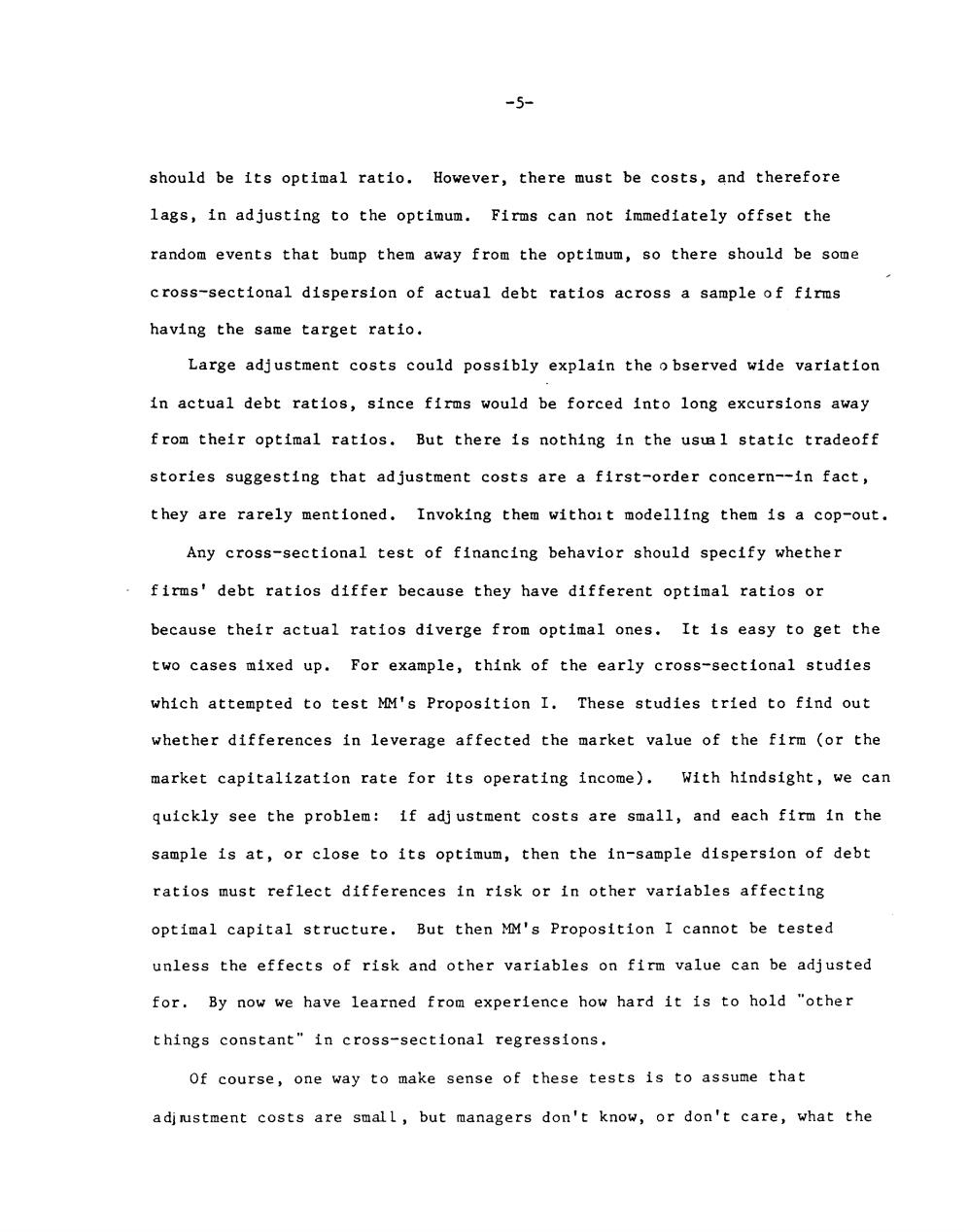正在加载图片...

-5- should be its optimal ratio.However,there must be costs,and therefore lags,in adjusting to the optimum.Firms can not immediately offset the random events that bump them away from the optimum,so there should be some cross-sectional dispersion of actual debt ratios across a sample of firms having the same target ratio. Large adjustment costs could possibly explain the o bserved wide variation in actual debt ratios,since firms would be forced into long excursions away from their optimal ratios.But there is nothing in the usu 1 static tradeoff stories suggesting that adjustment costs are a first-order concern--in fact, they are rarely mentioned.Invoking them withoit modelling them is a cop-out. Any cross-sectional test of financing behavior should specify whether 。 firms'debt ratios differ because they have different optimal ratios or because their actual ratios diverge from optimal ones.It is easy to get the two cases mixed up.For example,think of the early cross-sectional studies which attempted to test MM's Proposition I.These studies tried to find out whether differences in leverage affected the market value of the firm (or the market capitalization rate for its operating income).With hindsight,we can quickly see the problem:if adj ustment costs are small,and each firm in the sample is at,or close to its optimum,then the in-sample dispersion of debt ratios must reflect differences in risk or in other variables affecting optimal capital structure.But then MM's Proposition I cannot be tested unless the effects of risk and other variables on firm value can be adjusted for.By now we have learned from experience how hard it is to hold "other things constant"in cross-sectional regressions. Of course,one way to make sense of these tests is to assume that adjnustment costs are small,but managers don't know,or don't care,what the